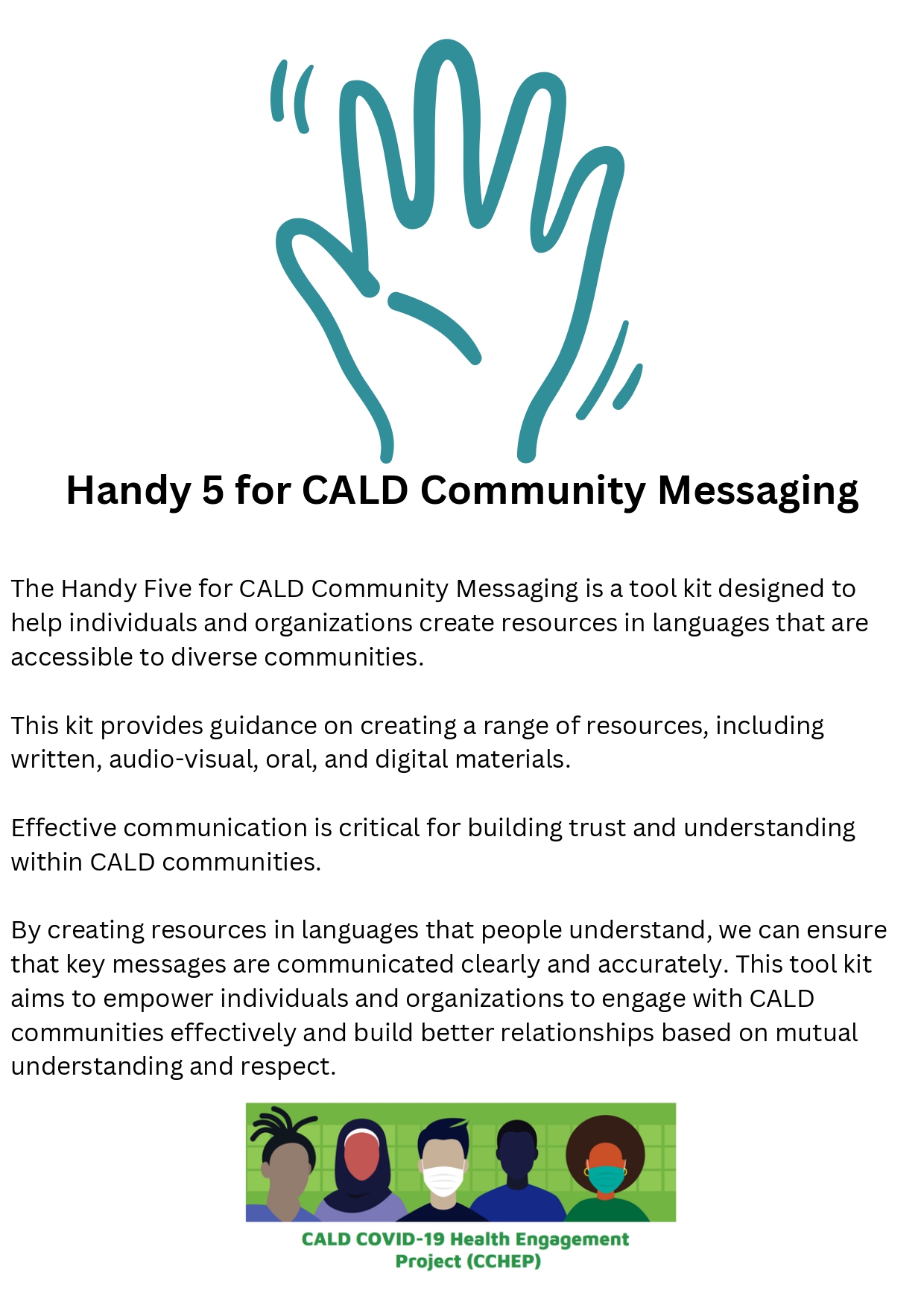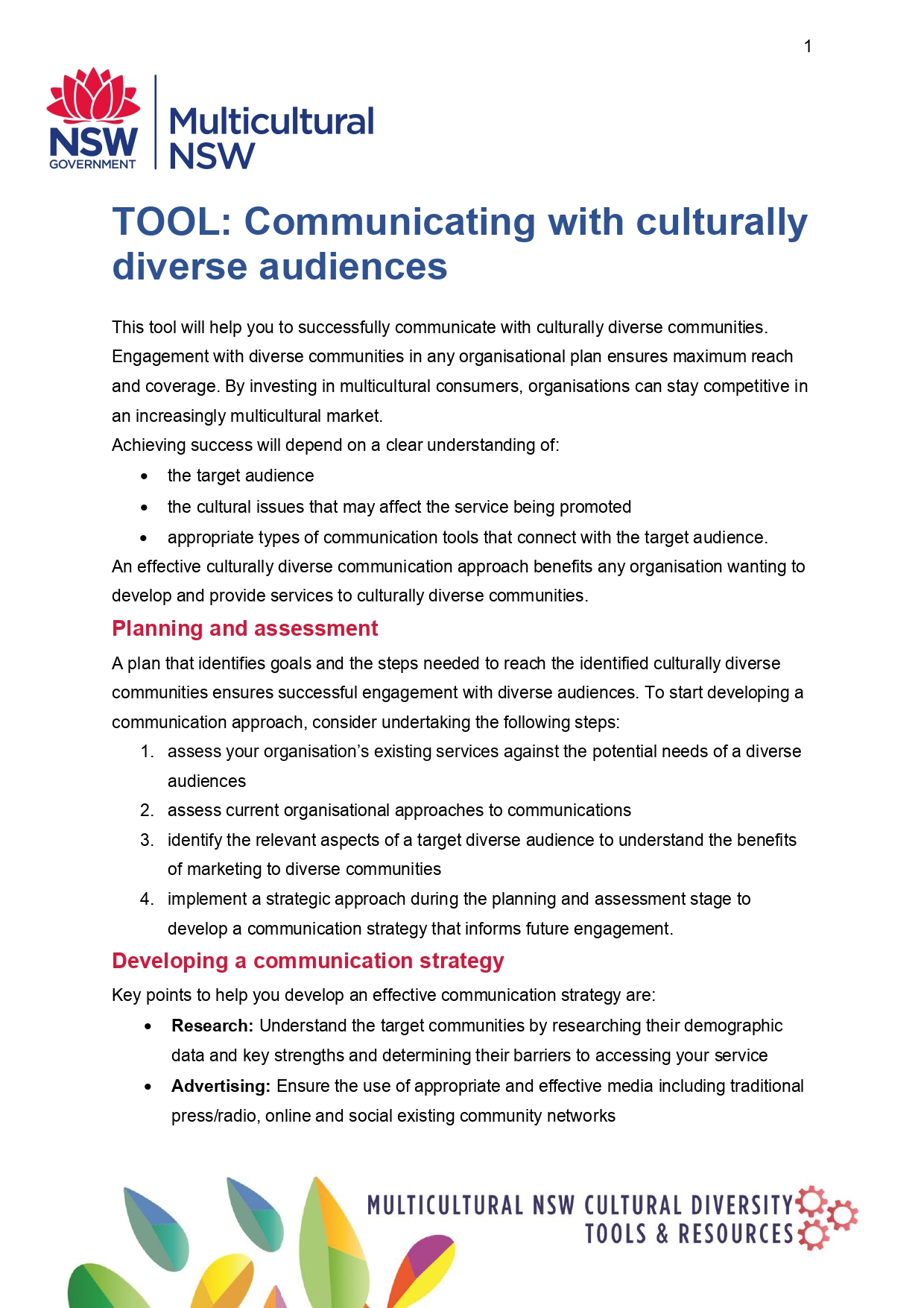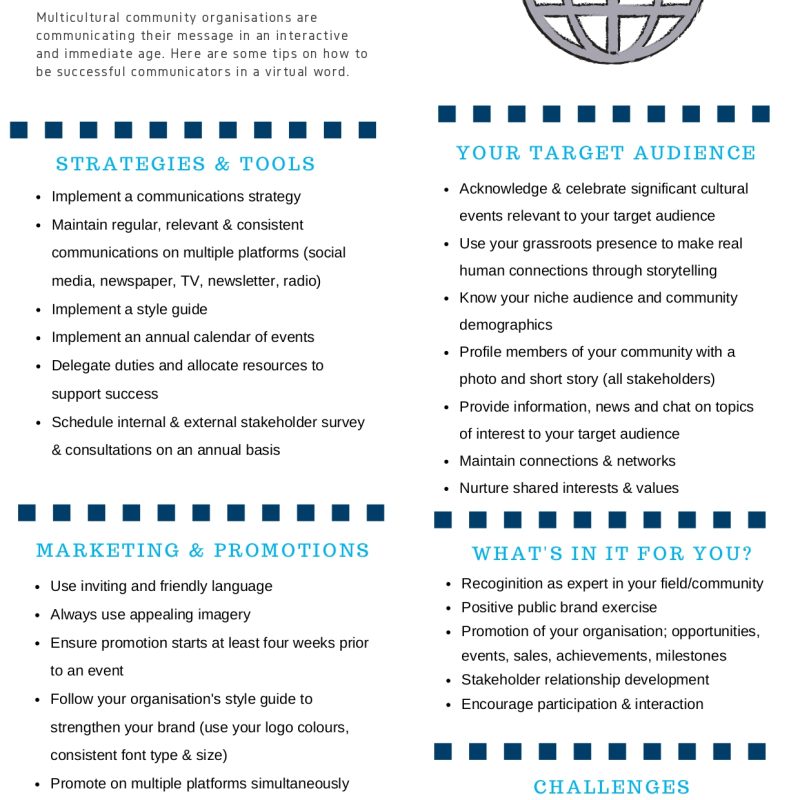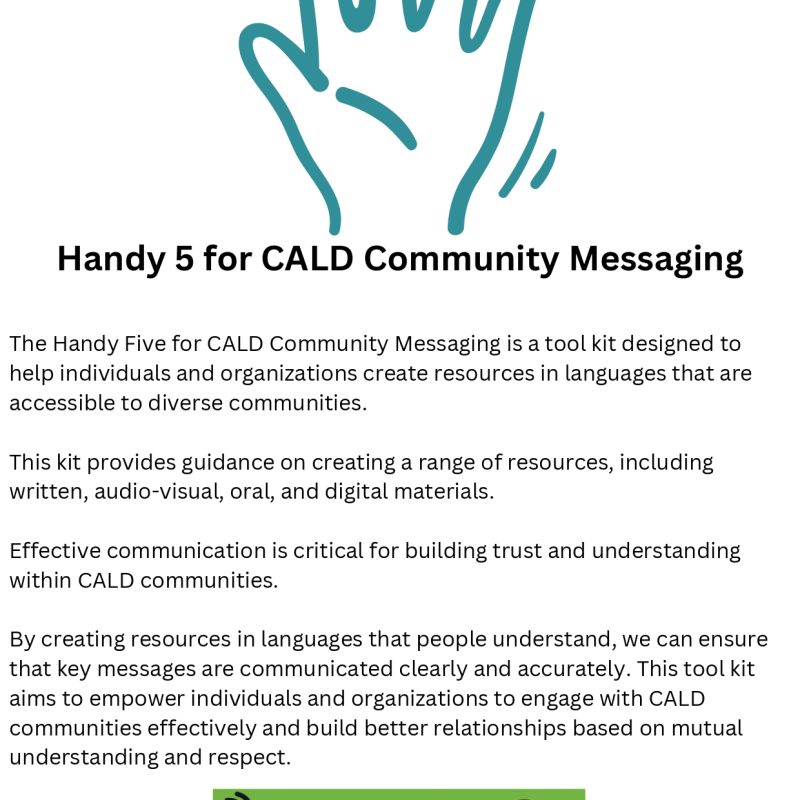Communicating with culturally diverse audiences
This document provides a comprehensive guide to effective communication with culturally diverse audiences, encompassing planning, strategy development, and the selection of appropriate communication channels and media.
Download
This document, ” Communicating with culturally diverse audiences,” focuses on providing organizations with a framework to reach and engage with culturally diverse communities. The document emphasizes that successful communication with these communities hinges on understanding the target audience, cultural nuances that might influence service promotion, and the communication tools best suited to connect with them.
Here are some ways organizations can use this document to engage multicultural communities:
- Planning and Assessment: Organizations should assess their existing services against the potential needs of diverse audiences, evaluate their current communication approaches, and identify relevant aspects of the target audience to understand the benefits of marketing to diverse communities. This initial assessment can inform the development of a communication strategy for future engagement.
- Developing a Communication Strategy: Organizations can research target communities by examining their demographic data, strengths, and barriers to accessing services. They should then ensure they are using appropriate and effective media, including traditional press, radio, online, social media, and existing community networks. Additionally, they should engage directly with the community, including forming community partnerships to gain insight into their lives and needs. Finally, organizations should monitor responses to their communications, identify strengths and weaknesses, and use this information to develop future goals and strategies for effective implementation.
- Effective Communication: Organizations need to determine the language and cultural profile of the service area. They should consider the size of particular language groups in the data sets, the time of arrival and English language competency of the identified group, and whether there are key organizations specific to age or issue groups that can be consulted about their needs. Organizations should also assess cultural issues and sensitivity in their approach, considering factors like whether communications can be directly translated or require cultural and linguistic considerations in their development and delivery. They should also be mindful of potential cultural barriers that might prevent service access.
- Appropriate Selection of Information Media: Organizations should develop information in the language and style preferred by the community, ensuring messages are sensitive, relevant, inclusive, and tested with the target communities. They should consider various media options to convey their message, including direct media engagement such as face-to-face visits, issue-specific briefings, and presentations. Physical collateral, like pamphlets, posters, and notices, can be distributed in community settings. Electronic and digital media, including websites, social media, and email networks, are valuable tools, particularly for communities with high IT literacy. Audio/visual media like applications and DVDs/CDs can also be used. Organizations should leverage various media platforms, such as local newspapers, radio stations, and ethnic media, to promote their services and initiatives.
Framework Pillar:
- Inform
Resource details
Resource type: Tool
Download file type: 4-page PDF
Best print size: A4
Source: Multicultural NSW





Reviews
There are no reviews yet.